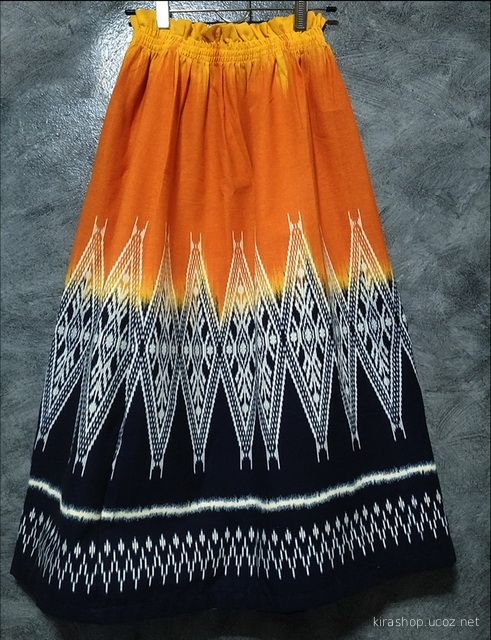 Kamakura Period.
Kamakura Period.
During the latter part of the twelfth century, the base of power in Japan shifted away from the increasingly decadent, self-absorbed imperial court in Kyoto to provincial military clans who chose the town of Kamakura as their headquarters. There are few extant garments from the Kamakura era (1185-1333), and the period literature is not very rich on the subject of costume. However, well-detailed surviving paintings do give an idea of dress at that time.
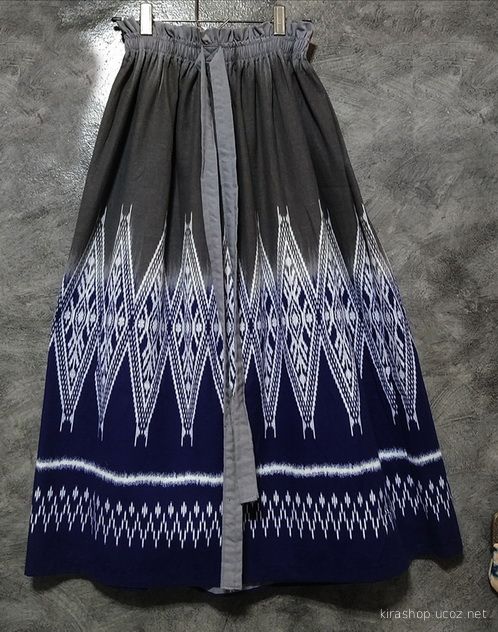
Women's clothing was less encumbered by exaggerated multilayering, and large-scale dyed patterns appear on some female outer robes. Pattern-dyed designs were to become one of the most important creative expressions in later Japanese dress. Expressions of originality in men's clothing also began to be manifest through the use of outscaled motifs and the splicing together of pieces from two completely different robes in order to create a startling new costume. Buddhist sects (such as Zen), previously unknown in Japan, were introduced from the Asian mainland, which resulted in the importation of kesa made from certain luxurious types of textiles otherwise unavailable to the Japanese. Earlier kesa were, on the whole, more humble in appearance.
Nambokuchô, Muromachi and Momoyama Periods.
The imperial city of Kyoto became the capital again with the advent of the Nambokuchô era (1333-1392), a period marked by clashes between rival military clans. Warfare continued during the subsequent Muromachi period (1392-1568). Since the advent of the Kamakura era, the imperial family had ruled in name only; the shogun, as the supreme military power, wielded the real power.
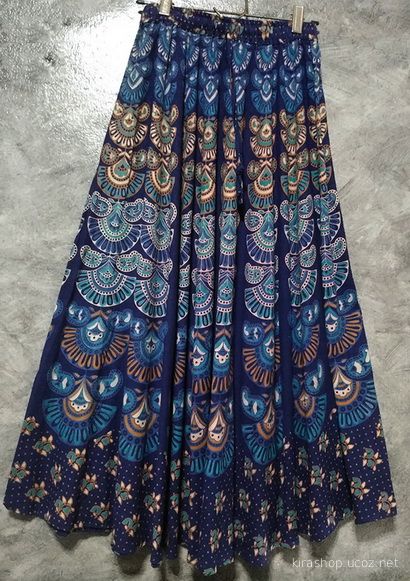
 In regard to cultural matters, the imperial court ceased to be in the vanguard. Elite members of the military class and high-ranking Buddhist monks were the leading practitioners of the newly established and extremely aesthetic tea ceremony. The shogun Ashikaga Yoshimitsu (1358-1408) was the first important patron of the No theater.
In regard to cultural matters, the imperial court ceased to be in the vanguard. Elite members of the military class and high-ranking Buddhist monks were the leading practitioners of the newly established and extremely aesthetic tea ceremony. The shogun Ashikaga Yoshimitsu (1358-1408) was the first important patron of the No theater.
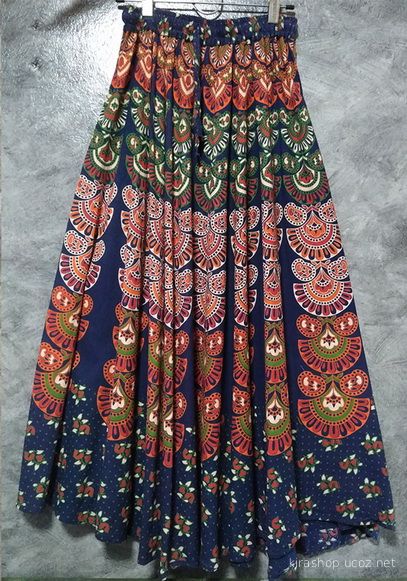
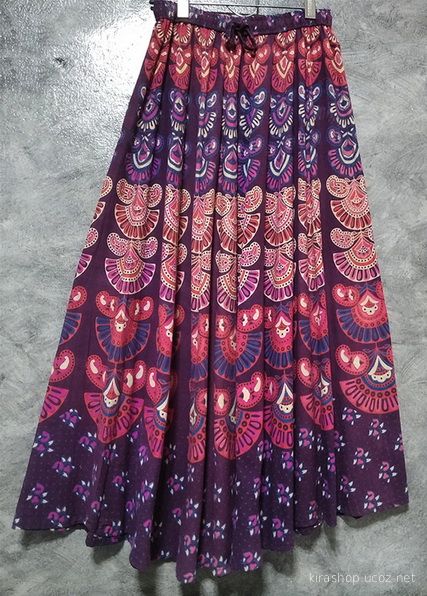
 Costumes of the No theater continued to exist in a wide variety of different types through the early twenty-first century. During the initial centuries of the all-male theatrical form, actors wore garments donated from the wardrobes of their elite patrons. By the Edo period (1603-1868), No costumes were being made specifically for use on the stage; however, for the most part the costume styles did not change and continued to reflect the clothing of earlier periods.
Costumes of the No theater continued to exist in a wide variety of different types through the early twenty-first century. During the initial centuries of the all-male theatrical form, actors wore garments donated from the wardrobes of their elite patrons. By the Edo period (1603-1868), No costumes were being made specifically for use on the stage; however, for the most part the costume styles did not change and continued to reflect the clothing of earlier periods.

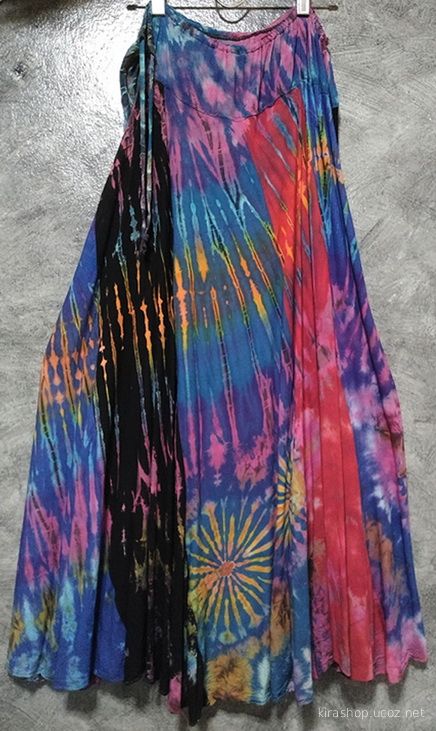 Within the broad category of No robes called ôsode, a term referring to tall and wide sleeves that are left unsewn at their ends, are certain types of robes long since obsolete in Japan, except within the most conservative and traditional spheres of Japanese life, such as imperial court rites and Shinto rituals.
Within the broad category of No robes called ôsode, a term referring to tall and wide sleeves that are left unsewn at their ends, are certain types of robes long since obsolete in Japan, except within the most conservative and traditional spheres of Japanese life, such as imperial court rites and Shinto rituals.
Often making use of gold threads in the form of flat, gilded narrow strips of paper, along with silk threads, ôsode costumes always have woven designs. These designs can be quite bold in scale and composition, though their coloration is more reserved, usually limited to just one color for the silk. The No theater also preserves the skirt-like trousers (hakama) of earlier times, and the layered wearing of costumes, with an ôsode robe typically worn as an outer robe.
The other principal category of No costumes features robes with sleeves shorter in height and width relative to ôsode sleeves. The sleeves are also rounded off at their bottommost outer edges rather than having a right angle as in ôsode. Sleeve ends are sewn up, allowing just enough of an opening for the hands to pass through. The name for this general category of No costumes is kosode. The same term had been used for the plain silk robe worn next to the skin and under layers of voluminous garments in the Heian period.
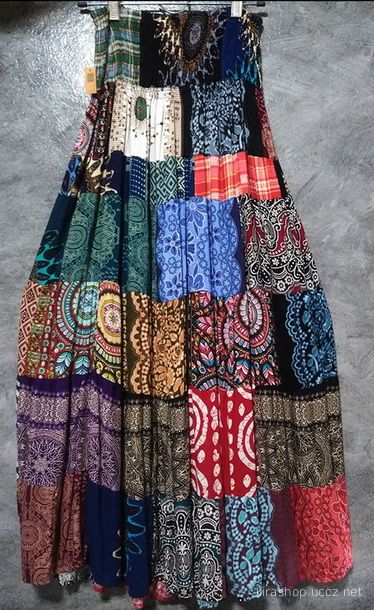 During the Muromachi period, the kosode literally emerged as acceptable outerwear. What had previously been private intimate wear was now permissible outside of domestic interiors. This form of dress became the principal vehicle for the expression of changing fashions and styles.
During the Edo period, most kosode-category costumes still preserved Muromachi and Momoyama period styles. Archaic styles that persisted included the use of heavy, ornate brocade fabric, extensive gilding, the splicing together of two completely different kinds of fabric in one robe, and an empty-center composition that concentrates the design motifs at the shoulders and hem of the robe. Such costumes did, however, change their over-all sleeve shape from oblong to squarish in response to an Edo period trend, and certain No robes with embroidered designs were occasionally influenced by contemporary fashion styles.
During the Muromachi period, the kosode literally emerged as acceptable outerwear. What had previously been private intimate wear was now permissible outside of domestic interiors. This form of dress became the principal vehicle for the expression of changing fashions and styles.
During the Edo period, most kosode-category costumes still preserved Muromachi and Momoyama period styles. Archaic styles that persisted included the use of heavy, ornate brocade fabric, extensive gilding, the splicing together of two completely different kinds of fabric in one robe, and an empty-center composition that concentrates the design motifs at the shoulders and hem of the robe. Such costumes did, however, change their over-all sleeve shape from oblong to squarish in response to an Edo period trend, and certain No robes with embroidered designs were occasionally influenced by contemporary fashion styles.
 Extant No costumes date as far back as the latter part of the Muromachi period. No robes were still being made in the early twenty-first century, and some of the modern producers made use of traditional hand weaving and natural dyeing techniques.
Extant No costumes date as far back as the latter part of the Muromachi period. No robes were still being made in the early twenty-first century, and some of the modern producers made use of traditional hand weaving and natural dyeing techniques.
For the purpose of providing comic relief from the tragedy and melancholy of No, kyôgen plays were traditionally performed along with No plays. Costumes for kyôgen reflect lower-class dress and are made of bast fibers (usually hemp or ramie) rather than silk, use no gold threads or gilding, and are patterned by means of dyeing-unlike No robes with their woven, embroidered, or gilded designs. Extant kyôgen costumes do not predate the Edo period.
In the 1540s, when the first Europeans reached Japan, the country was in the midst of protracted civil war. This combination of turbulent times and a new wave of foreign influence led to the creation of some astonishing examples of samurai-class dress.
Western-style tailoring and the newly imported "exotic" fabrics of European woolen cloth, Indian cotton chintz, and even Persian silk tapestry can be seen in several extant jimbaori (a type of vest worn over armor).
Further creativity in male dress is evident in some short kosode-shaped garments (dôfuku) associated with the leading military figures of the sixteenth century. These robes exhibit unconventional motifs and surprising color combinations.
Edo Period
Three successive military leaders were to emerge as unifiers of war-torn Japan. An enduring peace was finally established by the last of the three, Ieyasu Tokugawa. A new capital was established in Edo (later known as Tokyo), and all of the subsequent shoguns were supplied by the Tokugawa clan ruling from Edo while the imperial court remained in Kyoto. Japan entered a period of isolation, during which time the new religion of Christianity was suppressed, travel to and from Japan was prohibited, and foreign trade came under strict controls.
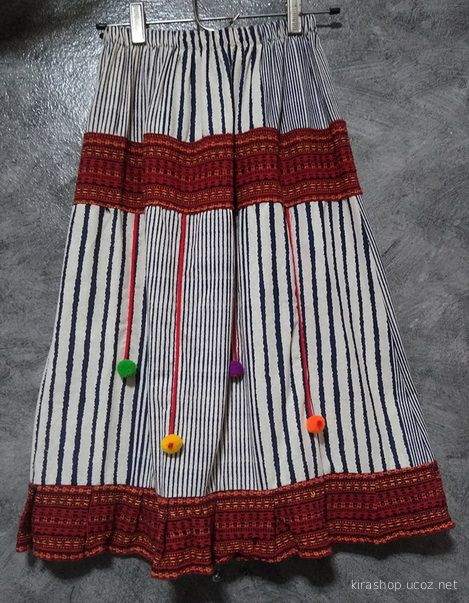
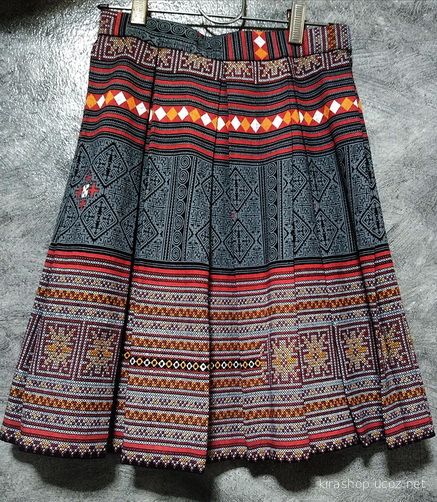 Conservative dress became the norm for the samurai class. Men's formal wear consisted of a short vest with winglike shoulders and the traditional hakama, with both garments made from a bast fiber patterned with tiny repeat motifs and invariably dyed blue. The samurai had no more wars to fight, though armor and its associated vest continued to be made. Although creative examples of the vest were still produced, samurai were not encouraged to dress like dandies.
Conservative dress became the norm for the samurai class. Men's formal wear consisted of a short vest with winglike shoulders and the traditional hakama, with both garments made from a bast fiber patterned with tiny repeat motifs and invariably dyed blue. The samurai had no more wars to fight, though armor and its associated vest continued to be made. Although creative examples of the vest were still produced, samurai were not encouraged to dress like dandies.
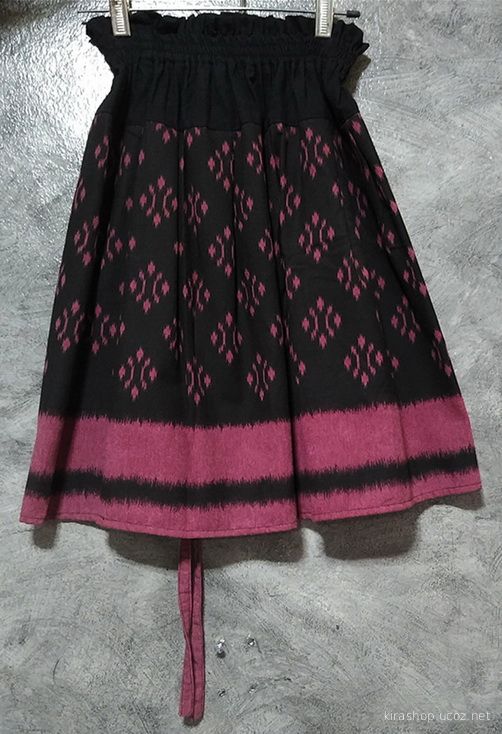
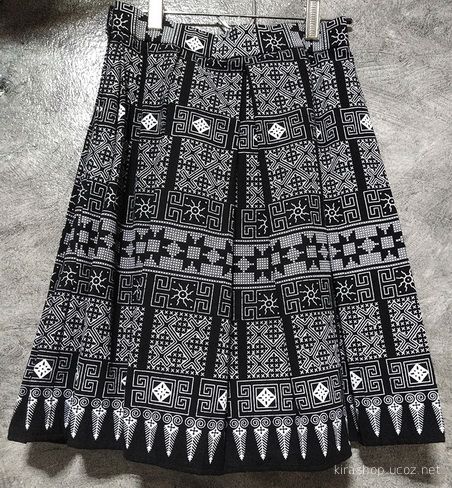 The greatest creativity in dress during the Edo period was manifest in the kosode. Much of the impetus for transforming this garment into such a fashion-conscious form of dress came from the newly rich merchant class, which was, nevertheless, at the bottom of the social hierarchy.
The greatest creativity in dress during the Edo period was manifest in the kosode. Much of the impetus for transforming this garment into such a fashion-conscious form of dress came from the newly rich merchant class, which was, nevertheless, at the bottom of the social hierarchy.
Whereas the No theater was the preserve of the upper classes, Kabuki theater was the performance art for the nouveau-riche merchants. Most Kabuki costumes have the standard T-shape of kosode; however, their coloration tends toward the garish and their design motifs can be overwhelming in scale. For example, a giant lobster might cover the entire back of a robe.
Leading Kabuki actors (also an all-male theatrical form) became wildly popular, their faces and dress disseminated in myriad woodblock prints. However, their costumes tended to be too outlandish to influence fashion, other than by popularizing a particular shade of a color or a certain motif. Kabuki costumes of the early twentieth century continued to resemble those of the Edo period.
 Buddhist clergy ranked high on the social scale and were given administrative powers and official support under the Tokugawa government, enabling them to share in the general prosperity. The most unusual tendency seen in kesa, the patchwork garment, was a pictorial impulse that resulted in examples being woven, embroidered, or painted with such narrative representational imagery as birds and animals in landscape settings, gatherings of divinities, and even flower arrangements. Two of the methods used to satisfy token adherence to the patchwork tradition involved the stitching of cording or the drawing of lines onto the garment in order to create the impression of a pieced construction. As the kesa is a flat, wide, horizontal-oriented, usually rectangular-shaped garment, an inspiration for this new style in surface design was quite likely to have been the broad painted screens widely in use during the Edo period.
Buddhist clergy ranked high on the social scale and were given administrative powers and official support under the Tokugawa government, enabling them to share in the general prosperity. The most unusual tendency seen in kesa, the patchwork garment, was a pictorial impulse that resulted in examples being woven, embroidered, or painted with such narrative representational imagery as birds and animals in landscape settings, gatherings of divinities, and even flower arrangements. Two of the methods used to satisfy token adherence to the patchwork tradition involved the stitching of cording or the drawing of lines onto the garment in order to create the impression of a pieced construction. As the kesa is a flat, wide, horizontal-oriented, usually rectangular-shaped garment, an inspiration for this new style in surface design was quite likely to have been the broad painted screens widely in use during the Edo period.
The kesa also reflected fashionable taste in a more indirect way as a result of the custom for lay Buddhists to donate valuable clothing to temples. The garments would be unstitched, cut up, and remade into Buddhist robes. Other kesa were assembled from rich brocades, which were being woven domestically, as the Japanese textile industry had, by this time, absorbed the foreign skills and technology necessary for the weaving of luxury textiles.
The extravagant tendencies in kesa led at least one Buddhist sect to make an austere, monochromatic, unpatterned vestment in a bast fiber. Although there were no new innovative styles, kesa-in the early 2000s-reflected all of the variety seen in the Edo-period examples. However, several early twenty-first-century textile artists in the West have made creative works inspired by the traditional form of the kesa.
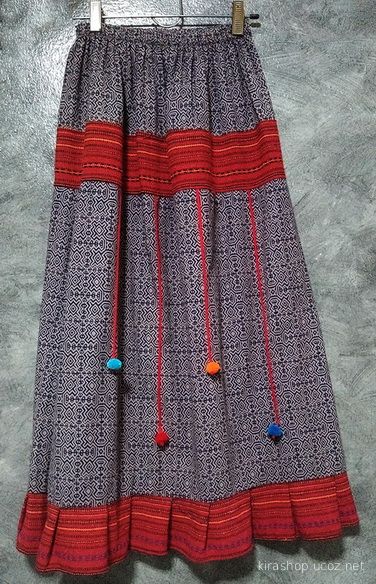 Meiji Period
Meiji Period
Japan was forced to end its isolation in the 1850s when Western powers with advanced military technology demanded trading concessions. The Tokugawa Shogunate collapsed, and power shifted to the imperial family, which moved the court to Tokyo in 1868 and proclaimed a new era, the Meiji (1868-1912). Once again, the Japanese realized the need to keep pace with more developed nations, and embarked upon a policy of rapid Westernization.
Western dress was adopted, with the emperor and empress helping to set an example for the rest of the country by occasionally wearing Western clothing. Buddhists and elite samurai families sold off quantities of kesa and No costumes, ultimately enriching museum and private collections in Japan and the West. For the more sophisticated urban population, and especially men, traditional Japanese dress ceased to be a part of everyday wear until eventually the use of traditional dress was relegated to Buddhist temples and monasteries; Shinto shrines; No, kyôgen, and Kabuki theater; tea ceremony and other traditional arts such as flower arranging; and the imperial court. Geisha, still an institution in Japan at the start of the twenty-first century, were still expected to entertain in kimono.
In the early 2000s, rites of passage such as children's coming-of-age ceremonies, school graduations, and weddings are occasions for members of the general public to wear traditional dress. A Japanese family also might don kimono when participating in special national and regional festivals or when relaxing after bath time at a traditional inn. It was not uncommon for a Japanese housewife to attend kimono school in order to better understand how to select and properly wear a kimono and its most important accessory, the obi.

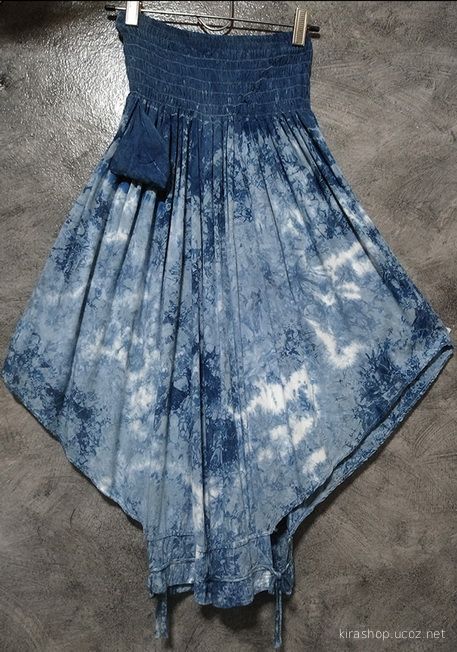 During the Meiji period, terms were coined in order to distinguish the old Japanese way of dressing (wafuku) from the newly adopted Western dress (yofuku). Kimono (derived from the verb for wearing clothes and the word for "thing") became the new term for the T-shaped garment formerly known as the kosode. The word has entered the dictionaries of languages the world over and commonly serves as the designation for the national dress of Japan, just as "sari" is universally recognized as the timeless Indian garment.
During the Meiji period, terms were coined in order to distinguish the old Japanese way of dressing (wafuku) from the newly adopted Western dress (yofuku). Kimono (derived from the verb for wearing clothes and the word for "thing") became the new term for the T-shaped garment formerly known as the kosode. The word has entered the dictionaries of languages the world over and commonly serves as the designation for the national dress of Japan, just as "sari" is universally recognized as the timeless Indian garment.
During the early Taishō (1912-1926) and late Taishō (1926-1989) periods, the mingei movement was founded by artists and intellectuals for the purpose of preserving and perpetuating the folk crafts of Japan, especially as practiced by farmers and ethnic minorities. Those who championed the idea of mingei can be thought of as the East Asian inheritors of the Arts and Crafts movement, although they did not have to insist on the importance of handicraft, as did their Western predecessors, because in the traditional Japanese distinctions between fine and decorative arts were not emphatic. However, the elevation of handcrafted works made by simple-living country people and minorities on the fringe of Japanese society did not fit with conventional ideas of social hierarchy in Japan.
Examples of costumes collected and studied by mingei enthusiasts include the bast fiber and cotton robes of the indigenous Ainu tribe, specially dyed costumes from Okinawa, heavily stitched farmers' jackets, and fishermen and firemen's garb.
Japanese Traditional Dress and Adornment By Alan Kennedy
